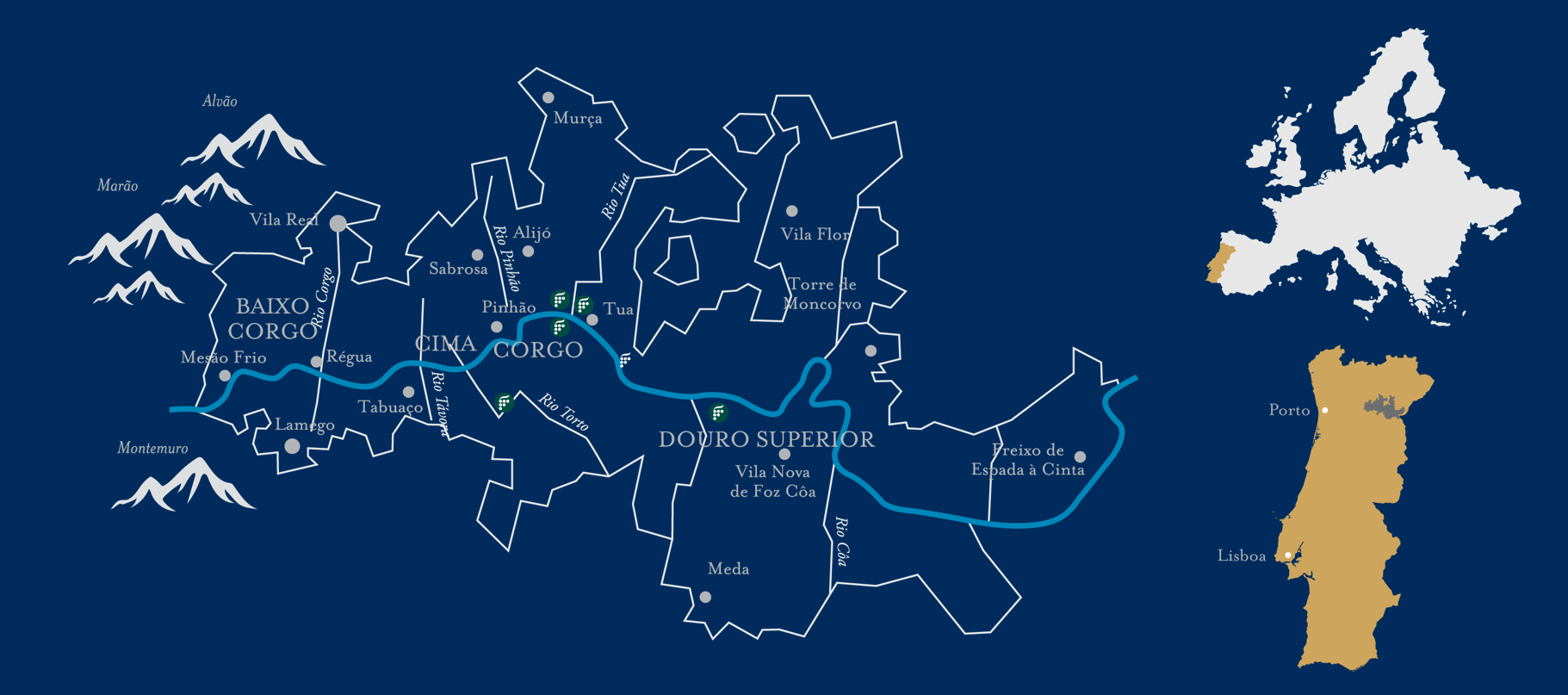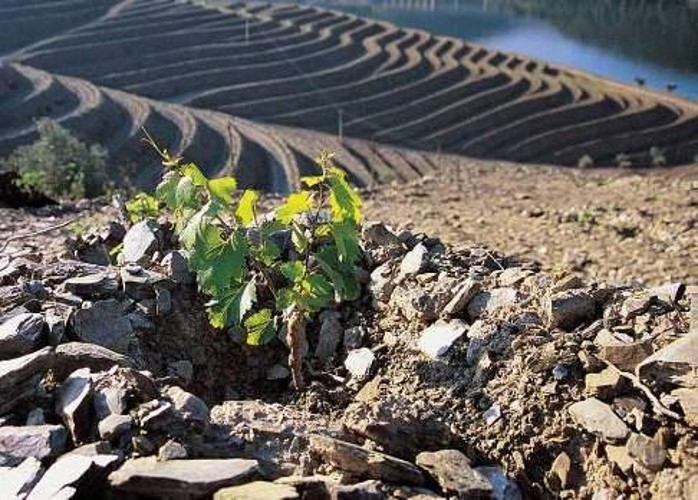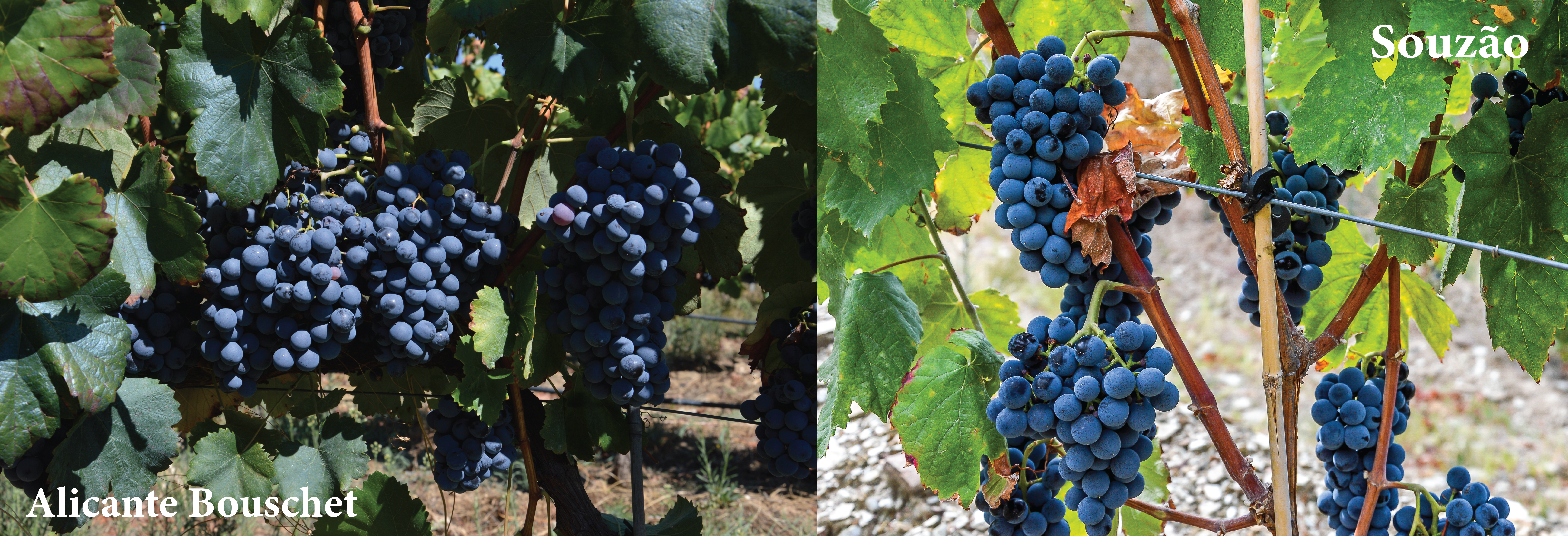The Douro Valley
The Douro Valley is the world’s oldest demarcated wine region and a Unesco World Heritage site. In 1756, the Marquês de Pombal legally established the limits of the wine-growing region. However, wine has been made in the Douro since Roman times.
After the implementation in the 18th century, the Douro Valley area expanded several times. Nowadays, it is the largest region of mountain vineyard in the world, covering 618,000 acres of land, of which almost 100,000 are under vine.

The Douro Valley is divided in 3 sub-regions that differ in terms of temperature and humidity. From west to east the regions are: the Baixo Corgo, Cima Corgo and Douro Superior. The majority of Symington Family Estates Quintas (vineyards) are situated in Cima Corgo and Douro Superior, and the vast majority of them are classified as A-grade, which is the highest quality grade for vineyards in the Douro.
The Douro has unique features that make its wines so special. The soil on which a vineyard is grown is undoubtedly reflected in the wine it produces. Douro soils are generally shallow and very rocky, consisting of a layer of light clay-schist spread thinly over the underlying schists rock. Although relatively soft, and gradually eroded into a silt-like dust, the rock is found throughout the soil profile. The schist soil yields very small quantities of grapes per year. However, it grows amazingly concentrated and sugary fruit.

Adding to the soil features, rain levels are usually high during winter and summers are long and hot. Whereas winter temperatures often fall below freezing, summer levels often climb above 104º F. These conditions are more pronounced further east.
The vineyards are planted on very steep and rocky terrain making the use of machinery difficult if not impossible. Therefore, the 22,000 Douro farmers are still the central piece in the growing and harvesting of the grapes.
The Douro has a fantastic range of indigenous grape varieties that have been used to produce Port for hundreds of years. Touriga Franca and Touriga Nacional are regarded as the finest castes but Tinta Barroca, Tinto Cão and Tinta Roriz also play major roles in the complex composition of Douro Vintages.

Tinta Barroca - Typically the first grape harvested, it has a chocolate character. Many compare it to Zinfandel.
Touriga Nacional - The next to ripen, it delivers backbone and concentration with rich casis flavors. Stylistically we call it the “Cabernet” of the Douro.
Tinta Roriz - Portuguese name for “tempranillo”. Depending on ripeness, they have bright cranberry or deep plum flavors.
Tinto Cão - It ripens late but needs to be picked at the right time to achieve the delicate balance of alcohol and acidity.
Touriga Franca - Usually the last to ripen. Strongly perfumed, adds Red Fruit flavors. Stylistically we call it the “Merlot” of the Douro.
In recent years producers in the Douro have been increasingly using the grape varieties of Alicante Bouschet and Souzão.

Alicante Bouschet - capable of adding softness and color to the Port, this grape varietal has been gaining importance within the industry
Souzão – Increasingly popular in Port production, it offers good acidic structure and depth of color.
